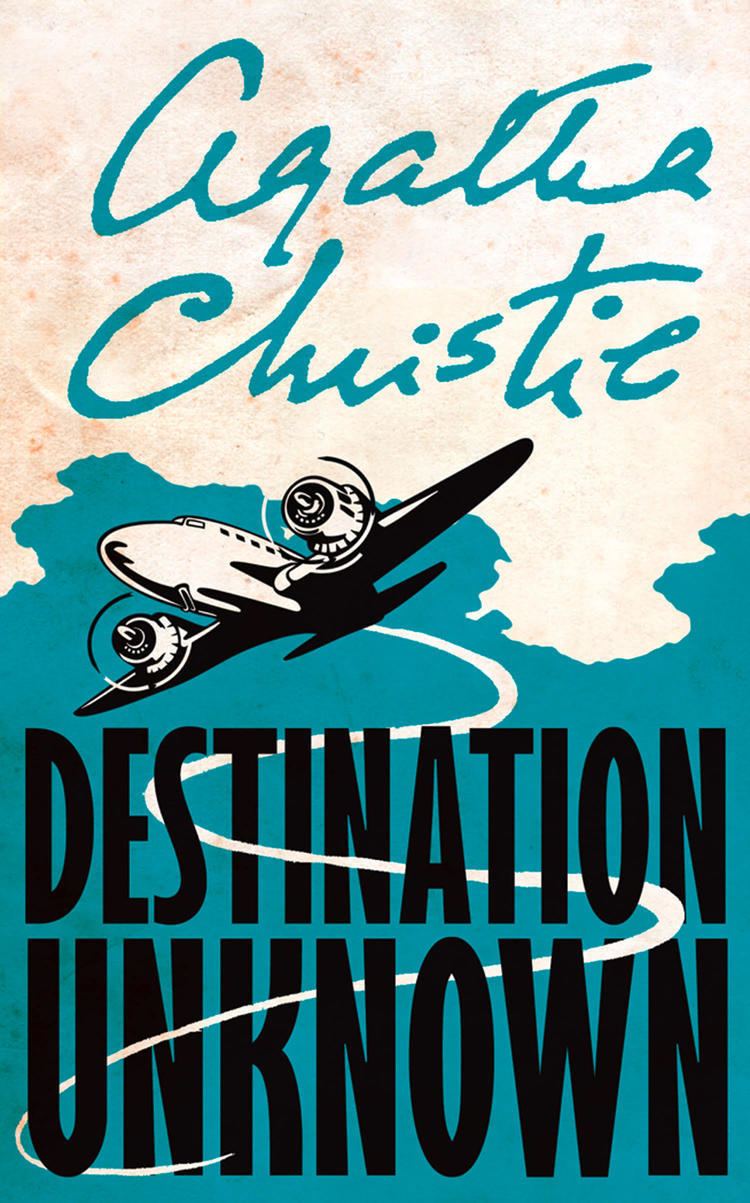7.2 /10 1 Votes7.2
Cover artist Not known Publication date 1 November 1954 Originally published 1 November 1954 Genre Crime Fiction Country United Kingdom | 3.6/5 Goodreads Language English | |||||||||||||||||||||||||||||||||
 | ||||||||||||||||||||||||||||||||||
Media type Print (hardback & paperback) Pages 192 pp (first edition, hardback) Similar Agatha Christie books, Crime Fiction books | ||||||||||||||||||||||||||||||||||
Destination Unknown is a work of detective fiction by Agatha Christie and first published in the UK by the Collins Crime Club on 1 November 1954 and in US by Dodd, Mead and Company in 1955 under the title of So Many Steps to Death. The UK edition retailed at ten shillings and sixpence (10/6) and the US edition at $2.75.
Contents
It is one of only four Christie novels to have not received an adaptation of any kind (such as screen, stage or radio) and one of only five of her novels to have not received a screen adaptation, the others being Death Comes as the End, Passenger to Frankfurt, Postern of Fate and Crooked House.
Plot summary
Hilary Craven, a deserted wife and bereaved mother, is planning suicide in a Moroccan hotel, when she is asked by British secret agent Jessop to undertake a dangerous mission as an alternative to taking an overdose of sleeping pills. The task, which she accepts, is to impersonate a dying woman to help find the woman's husband, Thomas Betterton, a nuclear scientist who has disappeared and may have defected to the Soviet Union. Soon she finds herself in a group of travellers being transported to the unknown destination of the title.
The destination turns out to be a secret scientific research facility disguised as a modern leper colony and leprosy research center at a remote location in the Atlas Mountains. The fabulously wealthy Mr Aristides has built the facility and lured the world's best young scientists to it so that he can later sell their services back to the world's governments and corporations for a huge profit, after having removed the scientists' resistance through lobotomies. The scientists are not allowed to leave the facility, and they are locked in secret areas deep inside the mountain whenever government officials and other outsiders visit.
Hilary Craven successfully passes herself as Betterton's wife Olive, because he is miserable and wants desperately to escape. She falls in love with Andrew Peters, a handsome young American who was in the group with her on their journey to the facility. Through clues she has left along the way, Jessop eventually locates and rescues her and the others held there, with help from Peters, who turns out also to be a secret agent and the cousin of Betterton's first wife Elsa, whom Betterton had murdered. Betterton is arrested, Craven no longer wants to die, and she and Peters are free to begin their life together.
Characters
Major themes
This book explores the 1950s subject of defection to the Soviets, but it also demonstrates how the break-up of Christie's first marriage in the 1920s remained with her. Like her 1934 Mary Westmacott novel Unfinished Portrait, it starts with a youngish woman who has married, had a daughter and whose husband has replaced her with someone else. In both books, a young man displays remarkable perceptiveness in spotting her intention to end her life and defies convention to save her, not only in tackling a stranger on intimate matters but in spending time in the woman's hotel bedroom to talk her out of suicide. In this story he talks her into espionage instead.
Literary significance and reception
The Times Literary Supplement in its review, written by Philip John Stead, of 19 November 1954, was enthusiastic when it asked, "Where do scientists go when they vanish from the ken of the Security Services? A solution to this fascinating problem is propounded in Destination Unknown. While it must be admitted that the secret, when disclosed, smacks rather of The Thousand and One Nights than of modern international rivalry for scientific talents, it may surely be excused on the ground that it provides Mrs. Christie with a story-tellers holiday from the rigours of detective fiction. Readers may regret the absence of the tonic logicalities of crime's unravelling – though "clues" are not altogether missing – for the secret service story belongs largely to Adventure, but in their place is the author's obvious pleasure in the wider horizons of the more romantic genre." The review concluded, "However much the purist yearns for Poirot or Miss Marple, he can hardly deplore Mrs. Christie's bright, busy excursion into this topical and extravagant sphere."
Maurice Richardson of The Observer of 31 October 1954, said, "The thriller is not Agatha Christie's forte; it makes her go all breathless and naïve." He concluded, "Needs to be read indulgently in a very comfortable railway carriage. She probably had a delicious busman's holiday writing it."
Robert Barnard wrote, "Slightly above-average thriller, with excellent beginning (heroine, whose husband has left her for another woman, and whose small daughter had died, contemplates suicide in strange hotel). Thereafter topples over into hokum, with a notably unexciting climax. Mainly concerns disappearing scientists – it is written in the wake of the Fuchs/Pontecorvo affairs. Mentions the un-American Activities Committee, without obvious disapproval."
Publication history
In the UK the novel was first serialised in the weekly magazine John Bull in five abridged instalments from 25 September (Volume 96, Number 2517) to 23 October 1954 (Volume 96, Number 2521) with illustrations by William Little.
The novel was first serialised in the US in the Chicago Tribune in fifty-one parts from Tuesday, 12 April to Thursday 9 June 1955 under the title of Destination X.
